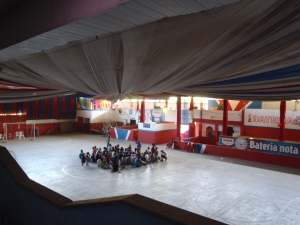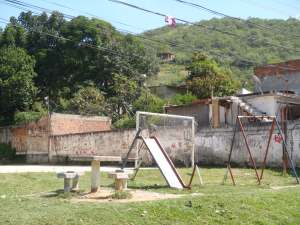
Centre For Local Research into Public Space (CELOS)
Visit to Belford Roxo
We take a train from the main station of Rio de Janeiro, Centro do Brasil, heading out to the outskirts of the city where we have been invited to speak to a community in Belford Roxo. The suburbs are the very poor neighbourhoods of Rio de Janeiro and these ghettos go on and on for miles. It takes one full hour of travel by train across the Baixada Fluminense (Plains of the State of Rio de Janeiro) before we arrive at our destination.
It is Saturday morning and the center of town is buzzing with people. This area, being on a plain, is always hot even in the winter. We locate the 'Bica da Mulata' (Fountain of the Mulata) a very old cast iron sculpture from the time of the Emperor, representing the goddess of water. Made in the Renaissance style it is a symbol of the discovery of a fountain of clear drinking water.
We head out to the Escola de Samba Inocentes de Belford Roxo where three times a week there is a program for youth that involves different sports as well as providing a meal.
Henrique explains to the parents how a community art project would work and one lady named Mona Lisa said that she knows the perfect place in Vila Rica, a neighborhood of Belford Roxo where there is a children's playground. Parque Caracois (Snail Park) is the favorite place for local children to play, but it is crumbling into the ground.
She convinces us that this little orphan park needs Projeto 'Crescer com Arte', the community would be interested and the doors are open. It is not a violent place, there is no drug traffic and the children can play freely on the streets. The problem is lack of infrastructure, the people are very poor and the park is in ruins.



 Show search options
Show search options






 You are on the [Belford Roxo] page of folder [Kristen Fahrig In Rio De Janeiro]
You are on the [Belford Roxo] page of folder [Kristen Fahrig In Rio De Janeiro] For the cover page of this folder go to the
For the cover page of this folder go to the 





